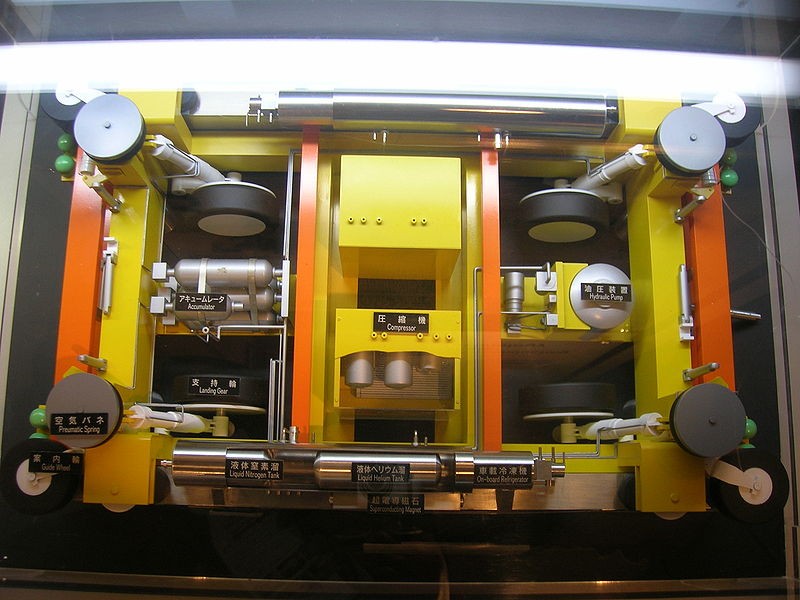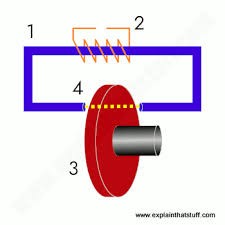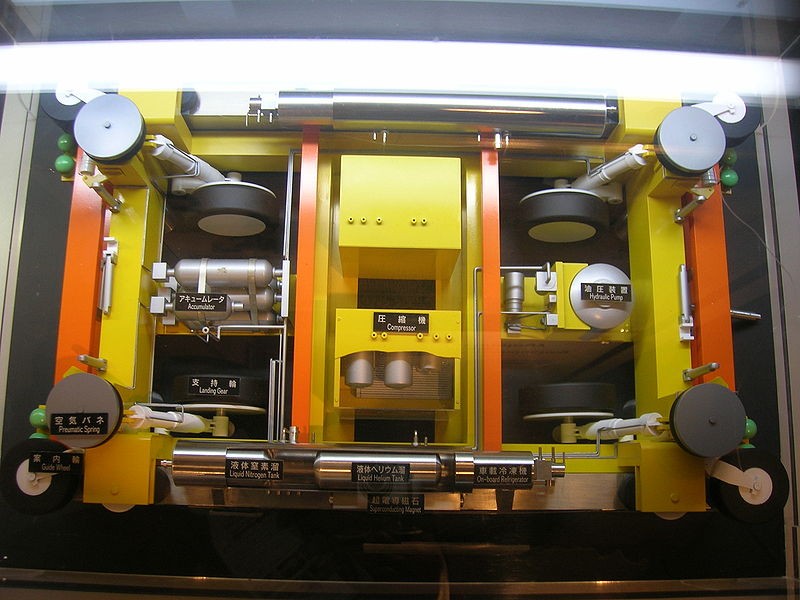Imagine a world where cars float above the ground, silently gliding without friction, propelled by nothing more than magnetic fields. This isn’t a futuristic fantasy—Japan is working to turn this vision into reality with its groundbreaking magnetic levitation (maglev) technology. At the forefront of this innovation is the Okinawa Institute of Science and Technology (OIST), where researchers have developed a system that could change the very way we think about cars, energy, and mobility.

While maglev technology has been in use for high-speed trains, Japan is now pushing the boundaries by applying it to individual vehicles. This development could be the catalyst for a major transformation in the automotive industry—one that moves away from engines, batteries, and traditional fuel sources.
A Revolution in Movement: How Maglev Works
Magnetic levitation works by using magnets to suspend objects in mid-air, eliminating the need for physical contact with the ground. This suspension effect drastically reduces friction, leading to smoother, more efficient movement. Traditionally, maglev technology has been used for trains, like the famous Shinkansen, allowing them to travel at incredible speeds. However, those trains still require constant power to stay in motion.
What sets Japan’s new maglev cars apart is a groundbreaking breakthrough by OIST’s Quantum Machine Unit. Unlike the previous systems, these vehicles require only an initial burst of energy to establish the magnetic field for levitation. After that, the car moves effortlessly over the track without needing further propulsion, making it a highly energy-efficient solution.

The maglev vehicles are designed using materials like diamagnetic compounds, which are repelled by magnets. When placed over a magnetic track, the car floats above it, with no friction from the road to slow it down. This unique approach offers a glimpse into a future where energy consumption is drastically reduced.
Breaking Free from Engines and Batteries
One of the most radical promises of maglev cars is their potential to eliminate the need for traditional engines and batteries. Today, electric cars are hailed as the future of green transportation, but they still rely on heavy batteries and motors to function. Maglev cars, however, could bypass these entirely.
By leveraging magnetic fields for propulsion, maglev technology does away with the need for fuel-powered engines or massive lithium-ion batteries. The result is a lighter, more energy-efficient vehicle. As the global automotive industry grapples with the environmental challenges of manufacturing and disposing of batteries, maglev technology offers a far cleaner alternative—one that eliminates emissions and significantly reduces the strain on resources.
In addition to the environmental benefits, maglev cars could also mark the end of frequent refueling or recharging stops. If the cars can maintain a self-sustaining magnetic levitation effect, drivers could enjoy uninterrupted travel over long distances, potentially transforming the way we think about car ownership and mobility.

Competing with Existing Technologies
While the prospect of maglev cars is thrilling, it’s important to consider how they stack up against the existing wave of automotive innovations. Major automakers like Lamborghini, Toyota, and companies in Germany are already investing heavily in advanced propulsion systems and emissions-reducing technologies.
For instance, Toyota’s zero-emission combustion engine has made strides toward reducing pollutants without sacrificing performance. However, it still relies on a combustion process, making it less energy-efficient than a frictionless, maglev-powered vehicle.
Germany’s low-emission engines, although a huge leap forward in reducing pollutants, still face the challenge of managing complex mechanical systems that require regular maintenance. Maglev cars, on the other hand, have the potential to eliminate this complexity by eliminating moving parts that contribute to energy loss and mechanical wear.
The real advantage of maglev technology lies in its simplicity—fewer moving parts mean less maintenance and more reliability. While electric vehicles (EVs) are undoubtedly an important step toward sustainability, maglev cars could represent the ultimate solution, bypassing many of the issues inherent in both combustion-based and electric vehicles.

The Challenges of Scaling Maglev Cars
Despite their potential, maglev cars are not without challenges. The most significant hurdle is scaling the technology from laboratory prototypes to vehicles suitable for mass production. While the research conducted by OIST is groundbreaking, the prototype remains small and experimental, far from ready for everyday use.
- Energy Efficiency: While maglev cars require far less energy than traditional vehicles, the technology must still be fine-tuned to ensure efficiency across larger distances and in a variety of environmental conditions. The process of scaling up the energy system to make these cars viable for everyday use presents a significant engineering challenge.
- Infrastructure Overhaul: Maglev cars will need specialized infrastructure to operate. Existing roads would need to be replaced or retrofitted with magnetic tracks, and new systems for charging or powering vehicles would need to be established. This represents a significant cost, as well as a major overhaul of existing transportation networks.
- Durability of Materials: The current materials used for levitation, such as the graphite-wax mixture, need to be tested for long-term durability. Over time, exposure to weather, wear, and environmental factors could affect their performance. Researchers must ensure that these materials can withstand the demands of daily use.
- Public Acceptance: As with any new technology, public perception is key. People are used to the traditional concept of cars with engines, and the idea of a floating car might seem too far-fetched for many. Overcoming skepticism and gaining widespread public trust will require time, education, and significant real-world demonstrations of the technology’s benefits.
A New Era of Transportation
The concept of cars that glide without friction is nothing short of revolutionary. If Japan’s maglev technology can overcome the obstacles in its path, it could usher in a new era of transportation—one that is faster, more energy-efficient, and less dependent on finite resources.

The benefits extend far beyond the automotive industry. Maglev technology could fundamentally change how we think about infrastructure and urban planning. Cities could develop with a focus on frictionless, sustainable transportation networks, leading to less congestion, cleaner air, and reduced environmental impact.
The future of mobility is evolving rapidly, and Japan’s magnetic levitation cars may be the key to unlocking the next frontier. If successful, they could inspire a global shift toward a more sustainable, efficient, and futuristic way of getting around. The journey toward this new form of transportation may be long, but the potential rewards could transform society as we know it.
What excites you most about the possibility of maglev cars? Do you think we’re ready for such a dramatic shift in how we travel?










